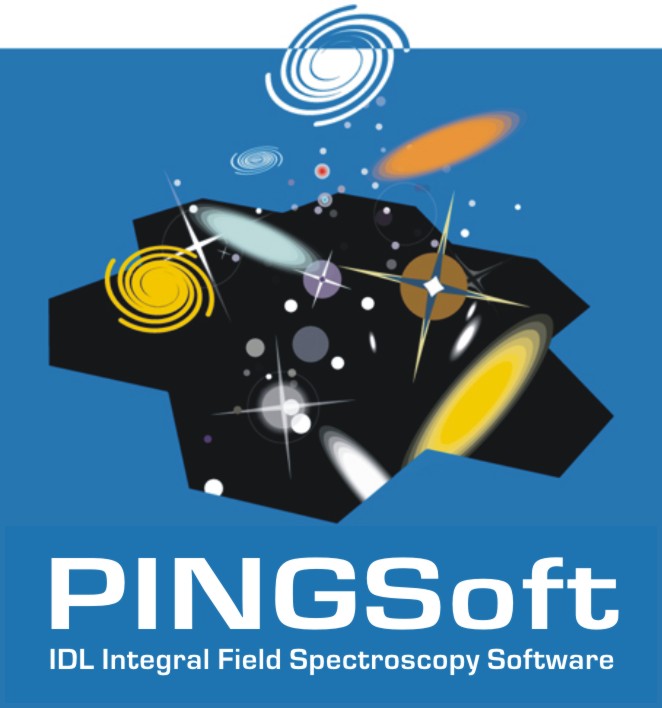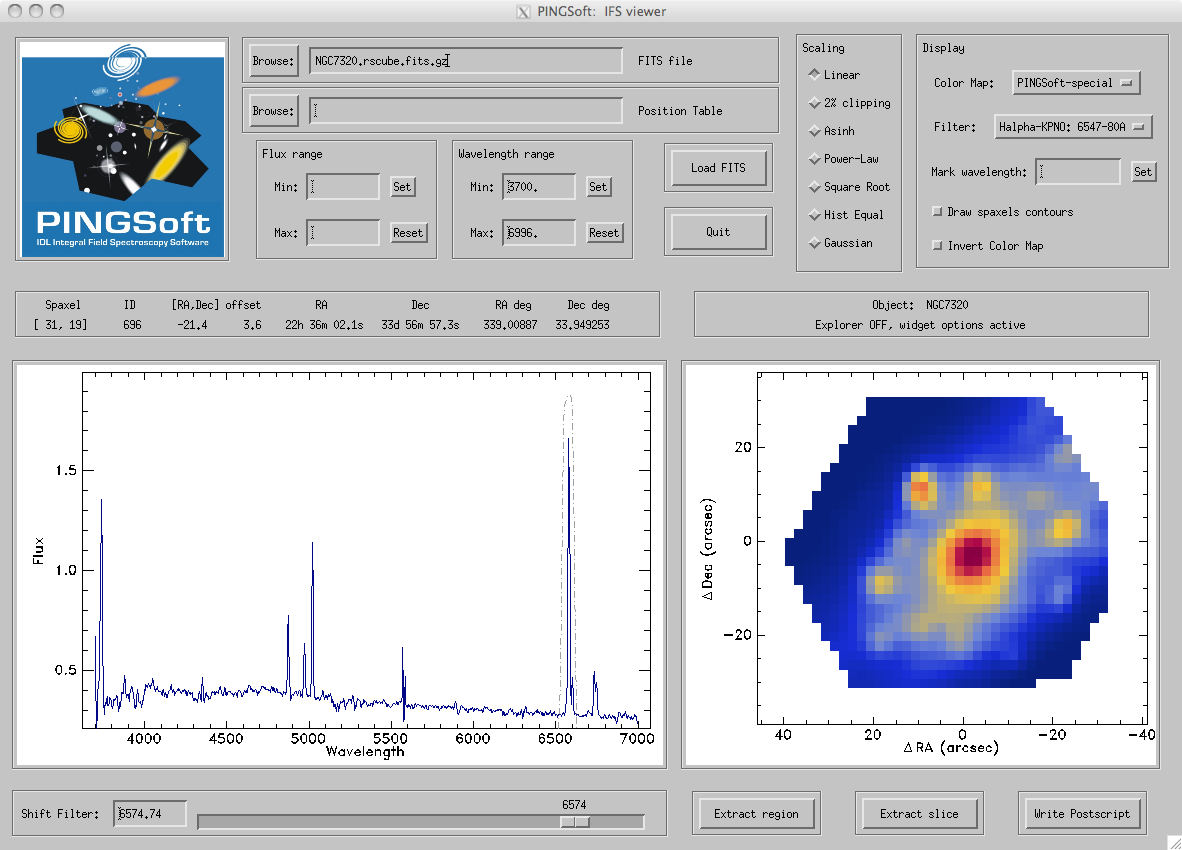
PINGSoft
2: an IDL Integral Field Spectroscopy Software
PINGSoft, is a set of IDL routines designed to
visualise, manipulate, and analyse integral field
spectroscopy (IFS) data based on either 3D cubes or Raw
Stacked Spectra (RSS) format. Any IFS data can be adapted
to work with PINGSoft, regardless of the original
data format and the size/shape of the spaxel.
PINGSoft
2 is a relatively major upgrade with respect to
the first version: the overall functionality and layout
have been improved, while the command syntax has been
simplified. This version includes new routines that offer
powerful spatial and spectral visualisation of the data,
improved extraction routines, and new analysis tools.
PINGSoft, is optimised for a fast visualisation
rendering, it supports RSS and 3D cube formats, it is
able to run on practically any computer platform with
minimal library requirements. Additionally, some
miscellaneous codes useful for generic tasks performed in
astronomy and spectroscopy are also included.
PINGSoft 2 is adapted to work natively with the
CALIFA survey data.

New features
- A new widget for interactive visualisation of the spaxels and spectra of a 3D cube or RSS file.
- Radial binning extraction with either fixed bins or based on a S/N floor.
- Spectra extraction and integration based on a user-given mask.
- Elliptical, conic or hyperbolic aperture extractions for any ellipticity, size and PA are now supported.
- Spectra selection based on S/N on continuum and/or emission line features.
- Intrinsic velocity field correction using a wavelength cross-correlation.
- Voronoi binning based on the method developed by Cappellari & Copin (2003).
- The data can be convolved with a full set of narrow and broad-band filters for visualization and/or analysis purposes.
- Screenshots:

Downloads
-
pingsoft_v2.tar.gz: PINGSoft 2 routines and documentation (last version: 5-Nov-2012)
-
PINGSoft 2 User's Guide, including installation instructions, and working examples.
-
pingsoft_examples.tar.gz: PINGSoft 2 example files as described in the documentation (~30Mb).
I would
appreciate if you drop me an e-mail (below) if you
download PINGSoft!
(to keep you updated of new versions, etc.)
Important
If you find this code useful for your research please
acknowledge the use of PINGSoft in your
publications:
Rosales-Ortega (2011) NewAstron, 16,
220
PINGSoft is distributed in the hope that it will
be useful, but without any warranty. Bugs, errors and
inconsistencies (especially with non-tested instruments)
are expected. If you want to report a bug, or if you have
any comments or suggestions please contact the author at:
frosales_at_inaoep.mx
PINGSoft is licensed under GPLv3.